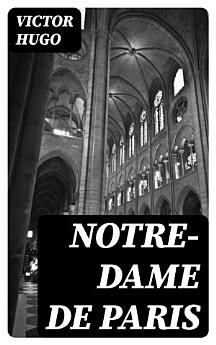Notre-Dame de Paris
sept. 2022 · DigiCat
Ebook
465
Pages
family_home
Admissible
info
reportLes notes et les avis ne sont pas vérifiés En savoir plus
À propos de cet ebook
Set against the backdrop of 15th-century Paris, Victor Hugo's "Notre-Dame de Paris" intricately weaves the fates of its richly drawn characters, primarily focusing on the hunchbacked bell-ringer Quasimodo, the beautiful gypsy Esmeralda, and the tormented priest Claude Frollo. Written in a stylized prose that oscillates between a lyrical narrative and vivid, almost cinematic descriptions, the novel reflects Hugo's passionate advocacy for social justice. Its examination of love, obsession, and the clash between human beauty and moral decay positions the book within the Romantic literary movement, offering a critical commentary on the socio-political landscape of France during Hugo's time. Victor Hugo, a preeminent figure in French literature, was deeply influenced by the tumultuous history of his own country, particularly the injustices faced by the marginalized. His personal experiences with political exiles and societal upheaval underscore the themes of compassion and resilience present in the novel. Through his intricate characterizations and profound philosophical reflections, Hugo explores the perennial struggle between individual desires and societal constraints. "Notre-Dame de Paris" is a timeless masterpiece that transcends its historical setting to resonate deeply with contemporary readers. Hugo's exploration of the human condition, along with his evocative portrayal of Paris and its iconic cathedral, makes this a quintessential read for anyone seeking to understand the complexities of love, society, and the indomitable spirit of humanity.
Quelques mots sur l'auteur
Victor Hugo, born on February 26, 1802, in Besançon, France, is revered as one of the most towering figures in French literature. He is an author whose works have cemented his reputation as a poet, novelist, and playwright of the Romantic movement. Hugo's literary career spanned over six decades, within which time he produced an expansive oeuvre that is both celebrated and studied for its emotional depth and social commentary. Perhaps best known to the English-speaking world for works such as 'Les Misérables' and 'The Hunchback of Notre-Dame' (or in its original French, 'Notre-Dame de Paris'), Hugo's writing is distinguished by its profound humanitarianism and vivid imagination. 'Notre-Dame de Paris', published in 1831, stands as an exemplar of the Gothic novel, rich in historical detail and populated by memorable characters like Quasimodo and Esmeralda. The narrative not only captures the architectural splendor of the iconic cathedral but also the complexities of its era, all while weaving a poignant narrative exploring themes of love, fate, and social justice. Hugo's influence extends beyond his literary contributions; he was also a vocal advocate for social causes such as the abolition of the death penalty. His death on May 22, 1885, was mourned as a loss to French culture and the broader literary world. Today, Hugo's legacy endures as scholars and readers continue to explore the depths of his masterful storytelling and the richness of his language.
Attribuez une note à ce ebook
Faites-nous part de votre avis.
Informations sur la lecture
Téléphones intelligents et tablettes
Installez l'appli Google Play Livres pour Android et iPad ou iPhone. Elle se synchronise automatiquement avec votre compte et vous permet de lire des livres en ligne ou hors connexion, où que vous soyez.
Ordinateurs portables et de bureau
Vous pouvez écouter les livres audio achetés sur Google Play en utilisant le navigateur Web de votre ordinateur.
Liseuses et autres appareils
Pour pouvoir lire des ouvrages sur des appareils utilisant la technologie e-Ink, comme les liseuses électroniques Kobo, vous devez télécharger un fichier et le transférer sur l'appareil en question. Suivez les instructions détaillées du centre d'aide pour transférer les fichiers sur les liseuses électroniques compatibles.








